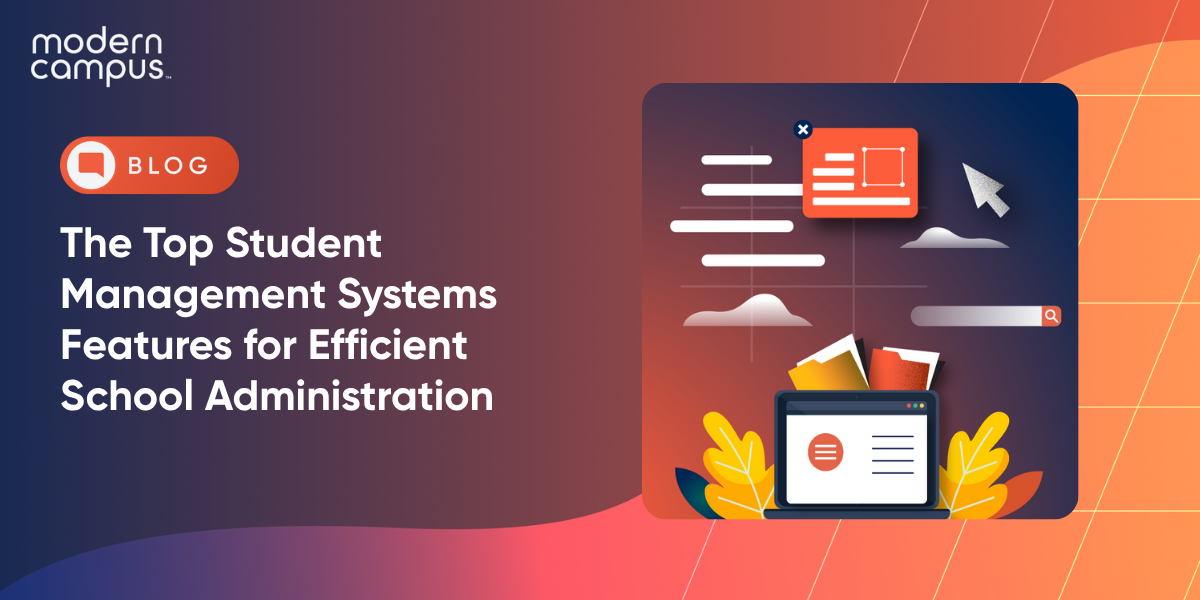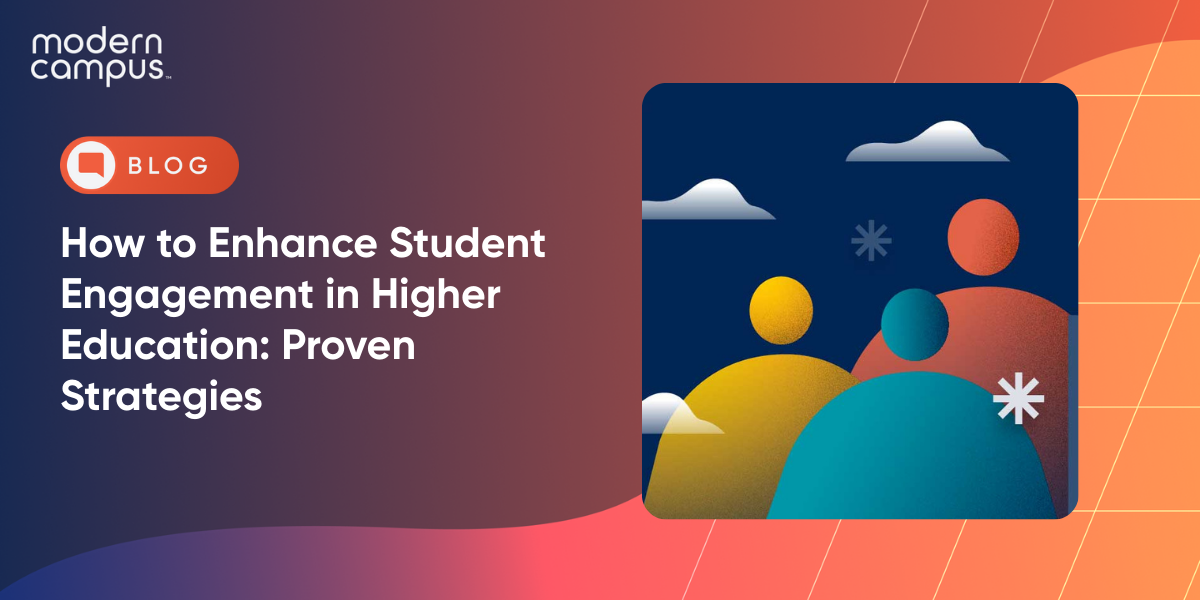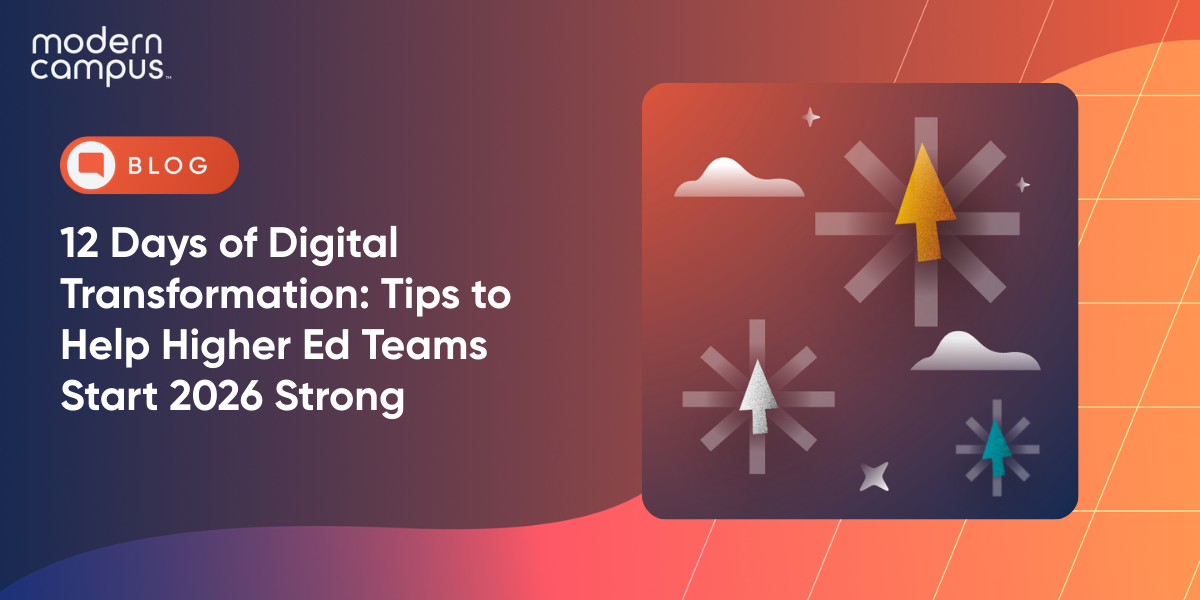The Top Student Management Systems Features for Efficient School Administration
Institutions are under mounting pressure to do more with less. They have less staff, less time and less margin for error. From K-12 private schools to large universities, administrators are balancing evolving student demographics, compliance obligations and rising expectations for digital-first experiences. At the same time, faculty and staff are expected to provide essential support across areas like admissions, financial aid, professional development and academic progress while managing students across a range of platforms.
The solution is student management systems built to meet the moment. Software with streamlined, intelligent tools is designed to simplify operations, empower staff and enhance the entire student experience.
Modern student management systems deliver advanced features like automated scheduling tools, parent access portals, attendance tracking and real-time data reporting. They provide easy access to essential information, improve communication across departments and support integration with other systems like learning analytics platforms or tuition management tools. Whether for traditional higher education or growing continuing education programs, a powerful platform leads to operational excellence and long-term student success.
Why Modern Student Management Systems Are Vital for Today’s Institutions
Legacy tools and disconnected platforms can no longer keep pace with the demands of modern education. Institutions now require unified systems that not only store student data but actively support smarter decisions, seamless workflows and meaningful student engagement. A modern school management system acts as the digital infrastructure that enables educational institutions to thrive.

Meeting New Expectations for Operational Agility
Administrators are expected to adapt quickly to policy changes, shifting student needs and new compliance requirements. Traditional systems often slow this process, creating bottlenecks in admissions, scheduling and communication.
Modern student management software, by contrast, includes dynamic scheduling tools, third-party integrations and customizable dashboards, enabling institutions to pivot faster and deliver essential information in real time.
Supporting the Full Learner-to-Earner Lifecycle
For many institutions, education doesn’t end with graduation. Managing continuing education, certificate programs and non-degree pathways requires a flexible platform built to handle diverse learner needs.
The best school management software supports the entire learner lifecycle, from onboarding and enrollment to professional development and credential attainment, by connecting academic goals with career outcomes and offering actionable insights through learning analytics and advanced reporting.
Addressing Challenges in Staff Efficiency and Retention
A major challenge in education management is staff burnout caused by repetitive, manual tasks. Systems that require faculty to juggle multiple interfaces for grading, attendance or report cards waste valuable time and increase error risk.
Modern student management systems streamline operations by automating tasks, enabling role-specific views for teachers, administrators and support staff. Their user-friendly workflows empower personnel to focus on supporting students.
Best School Management Software Capabilities to Look For
The school management system you choose should enhance daily operations while improving the overall experience for students, faculty and families. The most effective platforms combine administrative automation with flexible student support tools, creating a foundation that meets various needs across departments and programs.

Integrated Curriculum and Catalog Management
Academic success starts with clarity. Integrated catalog and curriculum tools ensure students can access up-to-date course offerings, prerequisites and program sequences in one place. With transparency, institutions can reduce advising load, support informed academic planning and streamline approvals for new courses, ultimately strengthening their reputation for academic excellence.
Automated Communication & Student Interaction Tools
Modern platforms must enable real-time communication. Whether it's sending alerts about financial aid deadlines, scheduling changes or registration reminders, student management systems should include communication features that support both automated outreach and personalized engagement. These tools save time while improving communication across departments and ensuring students never miss a critical update.
Personalized Scheduling and Registration Experiences
Rigid, one-size-fits-all registration processes can be frustrating for students balancing academics, work and family. Leading student management software includes personalized scheduling tools that accommodate individual preferences and time constraints. By offering intuitive interfaces and smart recommendations, institutions can help students build schedules that support persistence, reduce administrative strain and boost retention.
How a Student Information System Enhances Operational Excellence
A well-implemented student information system (SIS) is the backbone of a well-run institution. When designed with today’s challenges in mind, these systems improve coordination across departments, eliminate redundancies and unlock the insights needed for strategic planning.
Here’s how they raise the bar for efficiency and outcomes.
Streamlining Enrollment, Registration and Payments
The enrollment process is often a student’s first interaction with an institution, and a frustrating experience can set the wrong tone.
A robust SIS simplifies this journey with automation, seamlessly guiding students through admissions, registration and tuition management. Institutions can reduce manual entry, minimize errors and ensure that students have easy access to everything from class schedules to payment portals in one centralized system.
Centralizing Data for Smarter Decision-Making
Scattered data across different systems makes it difficult for administrators to understand student progress, anticipate challenges or allocate resources. With a unified SIS, schools gain a single source of truth for student demographics, grades, attendance and more.
Built-in dashboards and learning analytics give administrators and faculty the visibility they need to support strategic initiatives, from improving student support to fine-tuning course offerings.
Reducing Compliance Risk and Improving Transparency
With growing oversight in areas like accessibility, financial aid and privacy, compliance is top of mind for education leaders. A modern SIS reduces risk by maintaining consistent records, automating compliance-related workflows and offering audit-ready access to essential student information. Whether for internal review or external reporting, these systems ensure transparency and accuracy while saving time for staff.
Advanced Features That Take Systems from Good to Great
While basic functionality like enrollment and grade tracking is essential, it’s the advanced features that truly differentiate powerful student management systems. These capabilities enhance personalization, automate key functions and help institutions scale their operations efficiently while keeping the student at the center of every interaction.
Predictive Analytics for Student Retention
Preventing student attrition starts with understanding why students leave and acting before they do. Advanced student management software leverages predictive analytics to monitor behavioral patterns, academic performance and engagement levels. Advisors and support staff can identify at-risk students early and offer tailored interventions that make a real difference in outcomes.
Beyond identifying trends, predictive analytics can shape institutional strategy. By analyzing long-term data, schools can detect common barriers to completion, evaluate the effectiveness of student support services and refine their advising models. It’s a forward-looking approach that moves institutions from reactive to proactive, turning data into meaningful action.
Mobile-First, User-Centered Interfaces
Learners expect the same ease of use from educational platforms as they do from their favorite apps. A mobile-first interface ensures that students, teachers and parents can engage with the system anytime, anywhere. Mobile-friendly interfaces should carry over to any device, whether checking report cards, updating schedules or communicating with faculty. Accessibility is key for driving adoption, and a clean, intuitive interface supports better outcomes across the board.
A user-friendly design also reduces training time and support requests, helping administrators and staff focus on what really matters. From touch-optimized dashboards to responsive navigation, mobile-friendly platforms meet the expectations of digital-native learners while simplifying day-to-day management for faculty and staff alike.
Seamless SIS and ERP Integrations
No single system does it all, which is why integration matters. Advanced student management systems are built to work hand-in-hand with other systems like learning management software, ERP platforms and financial aid tools. Seamless integration ensures real-time updates, eliminates data silos and enhances operational cohesion across departments.
For example, connecting SIS data with a continuing education software platform allows institutions to better track adult learner trends, manage short-term certificate programs and offer flexible enrollment pathways. Similarly, integrations with third-party platforms like Infinite Campus or Google Workspace expand the platform’s utility without requiring staff to juggle multiple logins or data exports.
Education Management Tools in Workforce and Continuing Ed
As demand for alternative credentials and flexible learning formats grows, continuing education is a core strategy for modern institutions. Education management tools designed for this space help schools attract adult learners, meet employer expectations and drive long-term revenue through agile programming. The key is choosing a system that supports both the administrative complexity and the learner-centered experience these programs require.

Supporting Non-Traditional Learners with Flexibility
Adult learners often balance education with work, family and other responsibilities. To meet their expectations, institutions must offer flexible program formats, modular course design and on-demand access to learning materials. Continuing education software that includes student management capabilities allows schools to accommodate these needs with customizable schedules, asynchronous course delivery and automated enrollment processes that reduce friction.
In addition to flexible access, non-traditional students expect clear value. Management systems with integrated career pathway tools, outcome tracking and salary outlooks allow institutions to link their offerings directly to job market demand. Making these connections supports enrollment growth and builds trust with learners looking for education that pays off.
Empowering Institutions to Offer Microcredentials and Certificates
Microcredentials, digital badges and short-term certificates are booming across industries, and managing them efficiently is no small feat. The best school management features support these offerings with dedicated tools for course creation, scheduling, credential issuance and reporting. With centralized dashboards, administrators can easily manage a wide variety of programs without burdening their teams with manual work.
From a student perspective, these systems simplify the path from skill-building to certification. Learners can track their progress, register for stackable credentials and showcase achievements with digital proof, making it easier to stay motivated and share accomplishments with employers. Adopting a streamlined, outcome-focused experience is essential for keeping adult learners engaged.
Personalizing Lifelong Learning Pathways
Institutions that embrace lifelong learning need tools that adapt to evolving goals and interests. Education management platforms with advanced personalization features help students discover relevant programs, receive targeted communications and chart learning paths that align with their long-term ambitions.
For example, persona-driven navigation and career exploration tools can guide learners toward programs that match their skills, experience and aspirations.
These systems also support institutional goals. By combining student data, engagement metrics and labor market trends, administrators can design offerings that reflect real-world demand and institutional strengths. It’s a win-win: learners gain easy access to programs with proven value, and institutions expand their impact across communities and industries.
Make the Smart Choice for Efficient Administration and Student Success
Whether you're managing a large university or a specialized program for adult learners, the right student management software can transform how your institution operates. From streamlining enrollment and registration to powering career-aligned pathways, today’s best school management systems are designed to save time, reduce complexity and enhance the student experience at every turn.
At Modern Campus, we’ve built a powerful platform tailored specifically for higher education, helping over 1,700 institutions simplify operations, manage student data and drive engagement across the learner-to-earner journey. Our student information system is the engine behind smarter decisions, scalable growth and lifelong learner support. Request a live demo and see what’s possible when you manage less and achieve more.
Last updated: April 1, 2025



